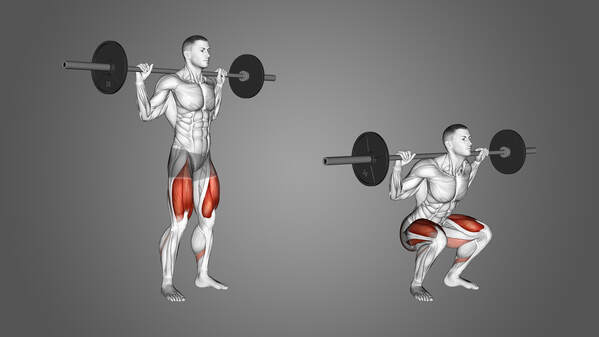|
By: Benjamin Cole
Beginning a new weekly section on the evolve blog is Technical Tuesday's, where we cover technical aspects of common lifts, injuries, movement patterns and more. This week we're going to cover the most common pattern in all of human history: the squat. In this piece, we're going to cover the technical aspects of the squat--what makes a movement a squat and the muscles involved--as well as tips and cues to improve yours either as a lifter or as a coach. On the next one join us as we dissect the deadlift. Squat Pattern: The Most Common Movement To sit down and read this you had to squat; to get up to do what you will next you had to do a concentric squat; to sit down later and eat you have to squat. I think you get the point--we squat everyday, often. It's the most natural movement we perform. Now, just because that it's the most natural pattern doesn't mean that it's done correctly. In fact, there's a high chance it's done incorrectly, especially under load, if someone hasn't been taught proper form by a coach or trainer. Squats engage a large portion of the lower musculature of the body: quadriceps and hamstrings through hip and knee flexion/extension, glutes through hip extension/flexion, the abdominals for core stability, and if loaded, upper and lower back for trunk stability. Engaging these muscle groups is critical if one is to perform a squat at maximum capacity and efficiency. Movement in Depth How well one squats is dependent on how effectively they engage the muscles involved. All too often people will let their knees sway inwards (valgus or 'knock' knees), which means they aren't engaging the the lateral portion of the glutes or quads entirely. Conversely, outwardly swayed knees (varus knee or being 'bowlegged') is when one's knees sway too far outward, lacking the necessary control for proper movement. Of course, those movement distortions could be caused on a deeper level with certain bone or muscle insertion deformities, but in a general sense, they occur from a lack of mind-muscle connection with the right muscles and overall neuromuscular instability to perform the movement correctly. So, what movements and muscles are involved in a squat and how do you perform it properly? Initially, one goes into hip flexion then knee flexion in a fluid motion. This is the eccentric phase of the movement, where the glutes and quads lengthen in tandem. In the concentric phase of the movement, one engages the entire quadricep involved with knee extension--rectus femoris, vastus medialis, intermedius and lateralis--as well as hip extension--rectus femoris, glute maximus, medius, and minimus--and completes one rep. Cues for Execution Just because those muscles fire doesn't mean they are firing right. Cueing yourself--or your client--is critical if you or they are to perform the rep properly. Popular cues include:
Common Compensations Lastly, we have to cover the compensations to look for in someone who may be not engaging the correct muscles. In my experience as a coach, I would say that the most common compensations and movement dysfunctions are lordosis and knee valgus. These two movement distortions account for most issues in squatting. As covered in recent blogs, the spine has natural curves to it, like an elegant S-shape, that allow it an open range of motion as well as dynamic decompression. When the trunk isn't stabilized by breathing in and bracing the pelvis 'dumps forward,' and the lower lordotic curve in the spine becomes overly accentuated, putting undue pressure on the lower back, often resulting in pain over time and compressed discs. The other major movement dysfunction is valgus knee, an inward-angled compensation of the tibia-knee due to lack of lateral muscle engagement. The body is very complex but also quite simple and intelligent; when certain muscles can't or don't activate in a movement it automatically resorts to the next best thing, which is often what we as coaches see as dysfunctional movements. Valgus knee usually occurs because one hasn't engaged their glute medius enough by 'splitting the floor,' the simple cue that gets a person to actively think of and activate lateral muscles such as glute med. A final point to hammer home is that the body moves in multiple planes, and that all compound movements work in more than one at some point. Keep this in mind when performing a squat: what muscles do you need to activate to make this a 'multi-planar' movement? By engaging the glute medius (a laterally functional muscle) the movement occurs in more than one plane, as this muscle works in a different plane to the sagittal, the primary movement plane for this exercise. More on planes of movement later! -- Ideally, this short but in-depth piece showed how complex a simple movement can become when we dissect it. Multiple muscle groups are involved when performing a squat, and utilizing the proper cues in the movement will ensure full engagement. Join us in the next evolve blog where we do the same with the world-renowned deadlift.
0 Comments
Leave a Reply. |
Evolve Fitness StudiosCheck out posts from our trainers, healthy recipes, and tips for staying motivated and more! Categories
All
|


 RSS Feed
RSS Feed
